Plantar fasciitis is often incorrectly called a heel spur as they both show very similar symptoms. Patients of both injuries suffer from severe heel pain. The source of the pain is different though. Knowing what you are suffering from, is important to set the right treatment plan to reduce pain and to recover. Consult a doctor or physiotherapist and ask for medical assessment to determine the cause of your heel pain.
Symptoms plantar fasciitis
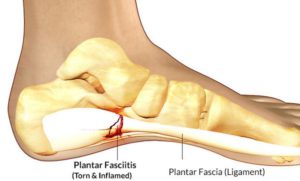
The plantar fascia ligament is the area between the ball of your foot and the heel. When the plantar fascia ligament gets over stressed and damaged it develops plantar fasciitis. This causes pain in the inside arch of the foot, where the back end of the plantar fascia is attached to the heel bone. This painful area may extend into the arch of the foot. The pain is severe at the first walk after waking up or after you sat down for quite a while. After you’ve walked a bit and the foot has been warmed up, the pain may decrease. But pain increases again after longer walks or runs (if you are still able to run).
Causes plantar fasciitis
Plantar fasciitis develops after the plantar fascia is “over used”, which caused (small) tears and inflammation. A plantar fasciitis injury can happen suddenly or over time through repetitive strain. Every plantar fascia ligament has to carry your whole body. It has to deal with all activities of your feet and needs continually adjustment to the different surfaces that you walk on. Personal body weight, foot arch height, shoe support, muscle tension and muscle strength all impact your plantar fascia.
Symptoms heel spur
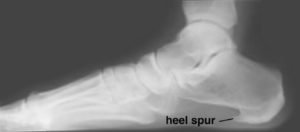
Heel spurs are tiny, sharp calcium deposits that have grown on top of the heel bone. They cause a stabbing pain in the heel. And that’s what literally happens, the sharp calcium deposit stabs into the fatty pad that protects the heel. The pain is severe and felt by every step.
Causes heel spur
Heel spurs can develop when the plantar fascia ligament is damaged and the body is creating extra calcium deposits on the heel bone–in an attempt to support the damaged fascia. Unfortunately these heel spur calcium deposits are often sharply shaped, which can further damage and erode the fatty tissue that supports your heel. This can lead to permanent damage to the foot.
My Plantar Fasciitis
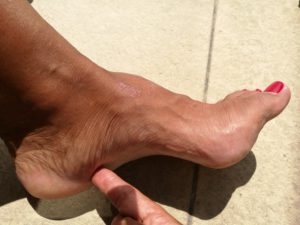
I while ago I lived in a developing country in the tropical Pacific Region. It was here where I developed a severe plantar fasciitis. Basically I wore flip-flops most of the day! For my running and gym exercises I thought ‘my old and comfy runners still looked good enough, but as I discovered later, they had absolutely no arch support and hardly any shock absorption anymore. I’d already had those shoes for a couple of years, and they were basically worn out. Since I wasn’t really aware of the quality of my shoes, I still used them while training for my first half-marathon. This increased the force through my feet and so my plantar fascia had to work extra hard to keep my high foot arch from collapsing.
I also thought that training for a half-marathon meant running, running and even more running….as much as possible…until I would reach that 21.5 km… How naïve I was…
I hadn’t done much strength training. I had lacked any flexibility exercises for calves and hips. And I hadn’t really thought of core strengthening at all! What practically happened was that I suddenly decided to take up running and then I overdid it. My plantar fascia had to deal with it all, whilst the other muscles in my body weren’t strong enough and didn’t absorb enough of the shocks during running.
When I noticed the first heel pain, I took a few days of rest and the pain decreased. But when the pains returned after each run, I noticed that my heel needed more and longer periods of rest to recover. The pain became more frequent and more intense. Because medical care was scarce where I lived, I could not consult a physio therapist. Therefor I was unaware of the fact that I was gradually developing a plantar fasciitis. A long period of pain followed. On the Internet and via social media I found the best combination of home remedies and professional treatments. Now, over a year later, I am happy to say that I’m finally running again and that I am pain free.
Prevention is key
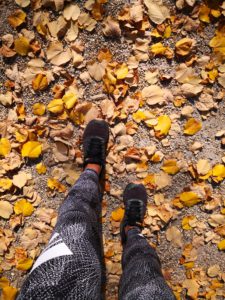
- For both plantar fasciitis and heel spurs, it’s important to wear the right supportive shoes with enough shock absorption. Don’t wear your worn out runners, even if they still look OK! If you intensively run, or train for longer distances, ask a professional to measure your feet in order to purchase the right shoes. You might even need additional insoles for extra support. I wear customised orthotics now.
- During the rest of the day, when you are not running or exercising, wear good shoes too. High heels and flip-flops are not supportive and so they do no good for everyday walking. Of course I still wear those as well, but when I have the opportunity to wear supportive shoes, I do.
- Maintain a healthy weight to avoid additional strain to the plantar fascia and feet. Keep an eye on your BMI and if needed adjust your diet to healthier nutrition and smaller amounts.
- Strengthen all muscles in your lower body (calves, ankles, feet, upper legs, bum and hips), and don’t forget to train your core too. Your abs and back muscles are very important to support your stability. Do a proper warm up before and cool down after each run.
- Also add flexibility training (stretching or yoga) to your fitness schedule. You can find many online exercises and stretches specifically for runners.
- Give your feet a break! Do not overdo your exercises routine and schedule regular moments of rest as well. Your muscles, tendons, bones and ligaments (incl. the plantar fascia) need enough time to recover after each training. Take good care of your feet, have them massaged and visit a pedicure for regular maintenance.
Treatments
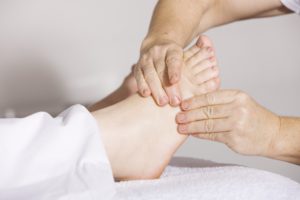
Quick treatment of plantar fasciitis, which can lead to heel spurs if left untreated, is important to avoid further damage. There are some good home remedies to for plantar fasciitis. But if you keep on struggling with recurring pains, I would really recommend you to consult a medical specialist for a personal treatment plan. Don’t try and error like I’ve been doing.
I hope this article was useful to you. Many runners suffer from heel pains, so if you know any, please share this article with them. If you have any further questions or remarks, feel free to contact me via email at an*******@mo*********.com or leave a comment below and I will get back to you.

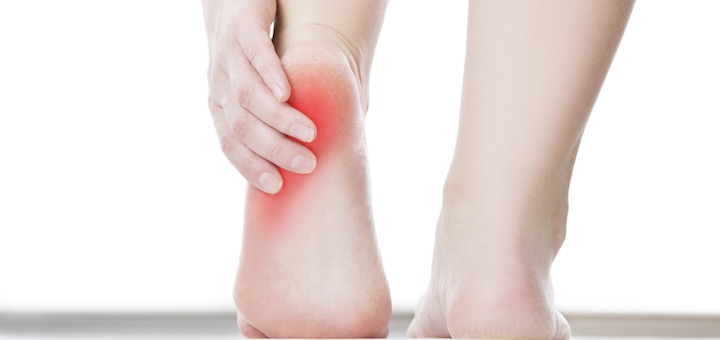

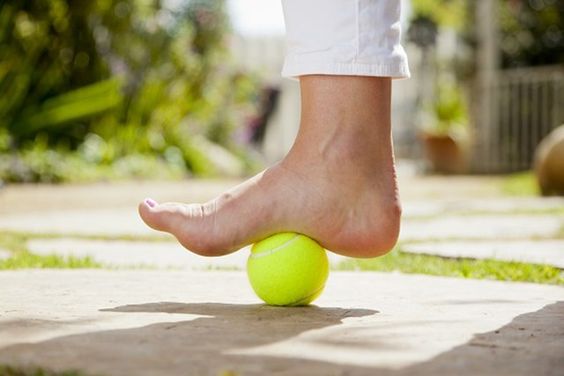
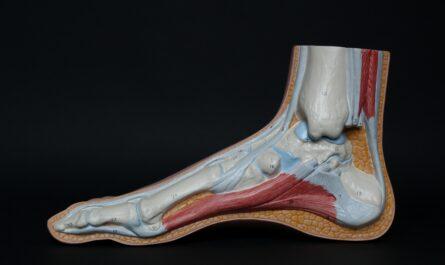

I am not a runner but I have been training a lot because I wanted to join a marathon soon. During training, I have this pain on my right heel and I haven’t seen a doctor yet as I can still tolerate it. Thanks for this article especially for the treatment and prevention pieces of advice. I will follow them and hopefully, this pain will subside. Cheers, D
I am not a runner but my friend is I will share the site with her. I am sure she will benefit thank you so much.
That’s great, thank you!